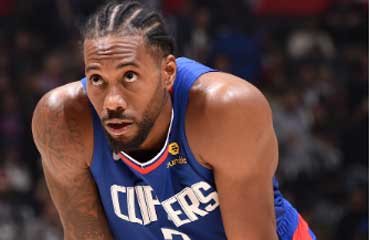Controversy
If you have been keeping up to date with the NBA recently, there is drama currently surrounding the league involving Kawhi Leonard’s health status. The NBA has an issue with the Los Angeles Clippers placing their superstar player on intermittent rest and sitting him out for games throughout the early part of the season. This has created controversy with regards to the management of Leonard’s injury. However, this issue may be even larger than just the Los Angeles Clippers and the NBA. How to properly manage injuries of elite level athletes comes into question. There is a difference of opinion on the topic of “load management” even amongst NBA players, let alone the owners and the league. The NBA has more of an invested interest in delivering the best fan experience and to have the best players in the league play because that is “what they are paid to do”. However, what may be best for the league and the fans may not be necessarily best for the player.
The Injuries
Leonard’s injury woes were a concern while he was playing with the San Antonio Spurs. He had an injury plagued season during 2017-2018. It was reported that he suffered from a right quadriceps tendinopathy that continued to linger. During the 2018-2019 championship season with the Toronto Raptors, the team placed Leonard on “load management” protocols as his knee issues may have been a result of overcompensating for the the right quadriceps he previously injured. Currently, Leonard is suffering from an ongoing injury to the patellar tendon of the left knee.
Tendinopathies
Tendons are important for athletic performance and explosive movements. These structures are sensitive to load and are susceptible to overuse injuries as a result of excessive loading. Elite level athletes such as those of the NBA, undergo vigorous training on a regular basis and are expected to perform at the highest levels for 82 regular season games in addition to playoffs. As you can imagine, this can eventually take a toll on an individual. Athletes can experience repetitive and overuse injuries due to overtraining. This causes athletes to be prone to further injuries and reinjury. Pain is not a reliable indicator of the onset of injury. We should be promoting the treatment of minor symptoms of tendinopathies, such as stiffness, with early “load management” to allow for proper recovery. Ignoring the symptoms or treating for pain can cause further damage and longer recovery times.
Load Management
Load management is a strategy to implement appropriate rest from activity to allow for recovery and optimal performance. It is beneficial to monitor load by considering the total load an athlete is exposed to throughout the course of the day, week and season. Tendons require adequate loading (not under loading and not overloading) for the best results. All trainers should consider adopting the Pain Monitoring Model to properly manage training intensity. This model can be used to adjust training intensity level that caters to the athletes. Based on this model, athletes are able to rate the level of perceived pain on a numeric pain scale where the activity is considered not hazardous (safe to acceptable) if pain is rated between 0-5. However if the pain rating is between 5-10, the activity is deemed a high risk or potentially harmful and therefore not recommended. Having athletes keep training diaries can be beneficial to track responses. How an athlete feels the following day after the activity can be reliable and useful information. Appropriate tendon loading exercises are necessary for prevention and the treatment of tendon injuries. A strategy to progressively increase the demand on the tendon by controlling intensity, duration and frequency of tendon loading should be implemented. Visit me to learn more!
Conclusion
Elite level athletes commonly have a high pain threshold and a low level of pain related fear, adopting the mentality of “no pain, no gain”. However, this makes them typical overloaders. Leonard is an intelligent individual and knows his body best. Not only is Leonard taking into consideration his personal health in the short term, but in the long term for the longevity of his career and quality of life after professional sports. It is reported that many former professional athletes do not have a good quality of life in terms of their physical health. They deal with wear and tear, chronic pain, limited range of motion and reduced function. Maybe Leonard is on to something and it could be time for the league and medical staff to educate all players and re-approach appropriate training protocols.
I still support you!
#wethenorth#loadmanagement @KawhiLeonard @LAClippersPhoto credit to sbnation.com





